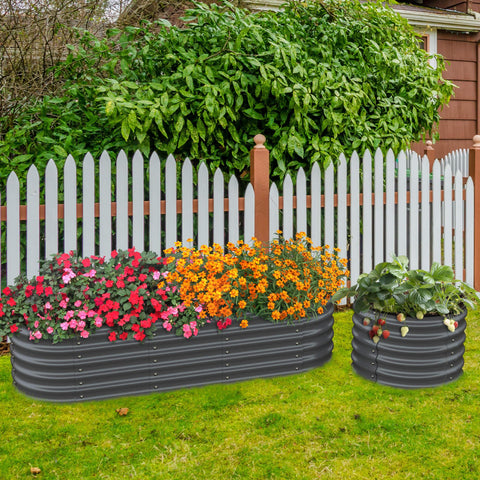Designing Raised Garden Beds: Tips for Aesthetic and Functional Gardens
Raised garden beds are not only practical for growing healthy plants, but can also add aesthetic value to your outdoor space. Whether you're a novice or an experienced gardener, designing raised garden beds that are both beautiful and functional is a rewarding endeavor. In this blog, we'll provide you with tips and ideas to help you create raised garden beds that enhance your landscape while optimizing their functionality.
- Plan Your Garden Layout
Before you start building raised beds, it's essential to plan your garden layout. Consider the following:
- Location: Choose a sunny spot that receives at least 6–8 hours of sunlight a day.
- Size: Determine the dimensions of your raised beds based on available space and your gardening needs.
- Accessibility: Ensure easy access to the beds for planting, watering, and harvesting.

- Select Suitable Material
Choose materials that not only match your garden's aesthetic, but also withstand the test of time. Some popular options include:
- Stone: Stacked stone or bricks create a classic, rustic look.
- Metal: Corrugated metal can provide a sleek, modern appearance.
- Composite: Recycled plastic or composite materials offer longevity without the need for regular maintenance.
- Optimal Bed Height
The height of your raised beds should be comfortable for gardening without straining your back. A typical range is 12 to 36 inches, depending on your preference and mobility. Taller beds can also deter pests like rabbits.
- Efficient Irrigation
Consider an efficient irrigation system, such as soaker hoses or drip irrigation, to ensure your plants receive the right amount of water consistently. Proper watering not only keeps your plants healthy, but also prevents overwatering or water wastage.
- Edging and Pathways
Define the edges of your raised beds with attractive materials like stones or wooden borders. Create clear pathways between your beds, making it easier to navigate your garden without stepping on the soil.
- Companion Planting
Plan your planting layout to include companion plants. Some plants thrive when grown together and can help deter pests or enhance each other's growth. This not only improves garden productivity but also adds visual interest.
- Aesthetic Planting Arrangement
Experiment with different planting arrangements to create visually appealing patterns. For example:
- Plant taller crops (like tomatoes or sunflowers) at the back of the bed and shorter ones (like lettuce or herbs) in the front.
- Mix and match colors and textures to create contrast and interest.
- Incorporate ornamental plants or flowers to enhance the garden's beauty.

- Seasonal Variation
Plan for seasonal variation in your garden. Ensure that you have a mix of crops for different seasons to keep your garden beds visually appealing year-round.
- Mulching and Ground Cover
Apply mulch to your raised beds to help retain soil moisture, suppress weeds, and give your garden a polished appearance. You can also plant low-growing ground covers around the beds for added aesthetics.
- Personalize with Accessories
Consider adding decorative elements such as trellises, garden art, or seating to personalize your raised garden beds and make them even more inviting.
It takes considerable planning and creativity to create raised garden bed that are both aesthetically pleasing and functional. You may design an outdoor area that not only produces abundant harvests but also serves as the visual focal point of your landscape by selecting the appropriate materials, maximizing bed height, planning your layout, and taking aesthetic considerations into account. So get creative, put your hands to work, and create raised garden beds that showcase your own gardening preferences.
